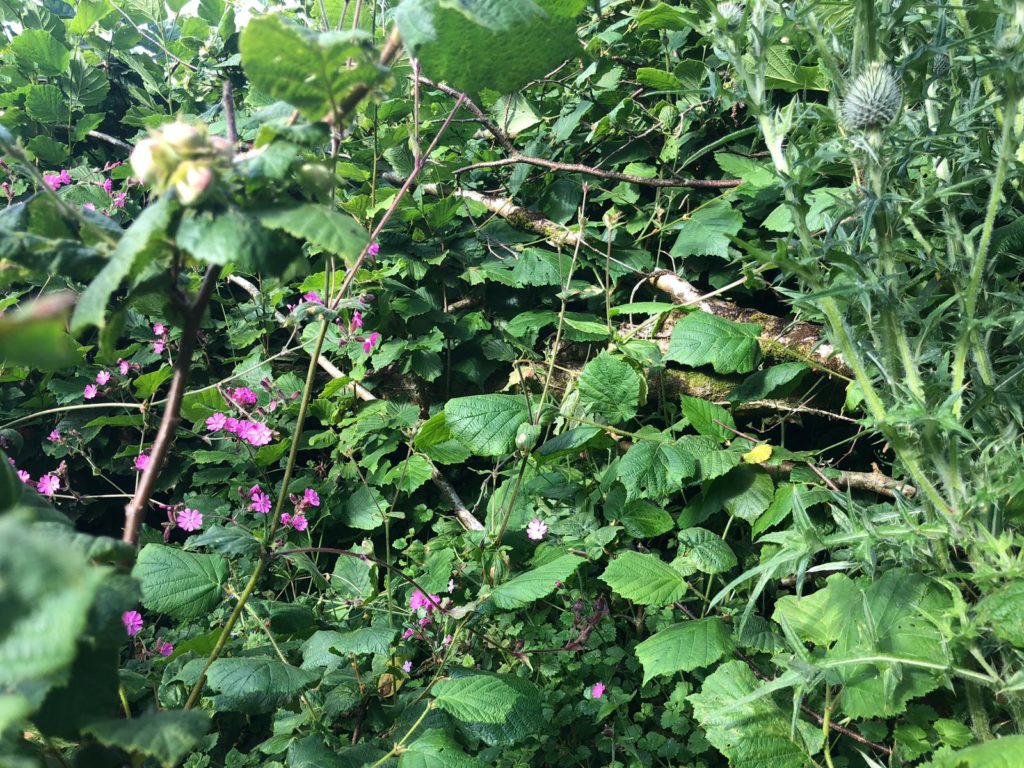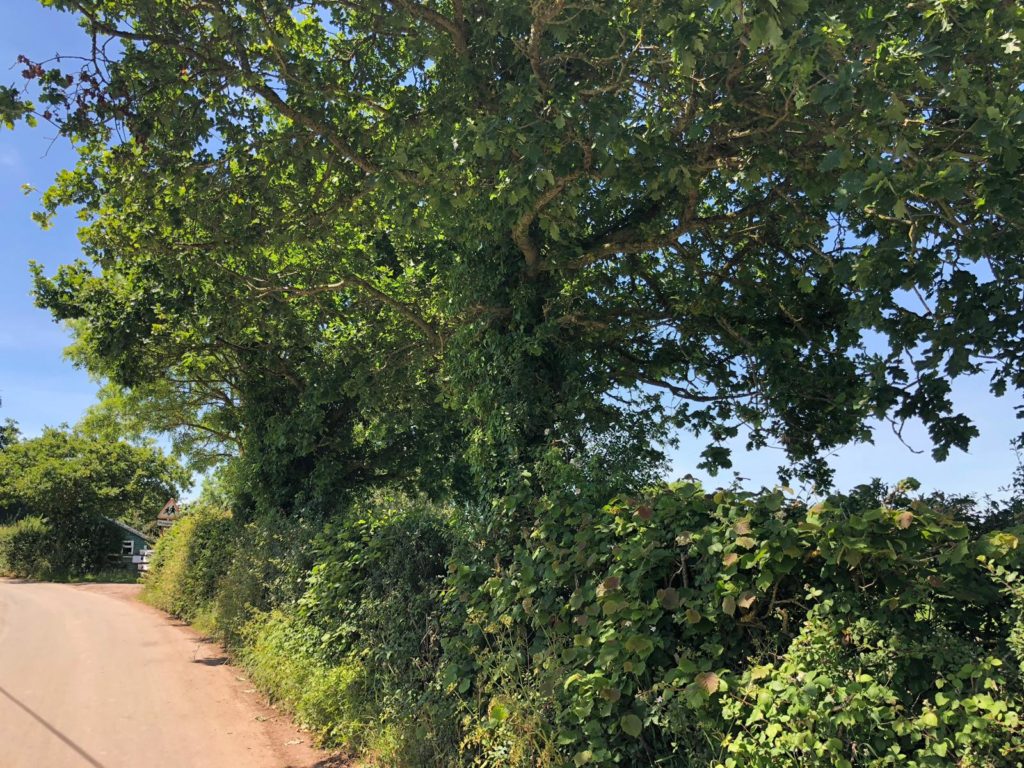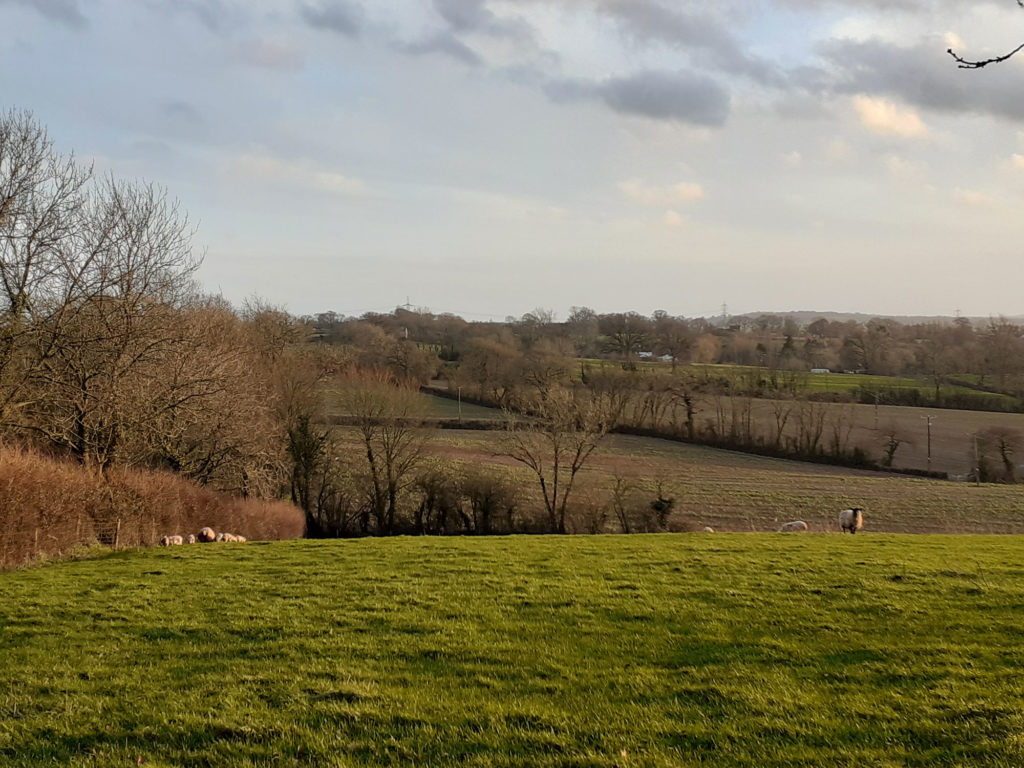Their value to wildlife
As a conservation charity, our primary interest in hedgerows lies in their remarkable capacity for nurturing wildlife. To bats, birds, bees, butterflies, hedgehogs, dormice and thousands of other species alike, hedgerows play a crucial role. They provide home, food, shelter and safe passage across the countryside.
Their enormous value to wildlife, frankly disproportionate to the amount of space they take up, is curious when you remind yourself that hedges are in fact a man made habitat. But delving deeper into the ecology of the humble hedge reveals the secrets to its wildlife success; structurally, a hedgerow actually resembles a woodland edge.

A healthy hedgerow with a diverse mix of plant species
Hedge or woodland edge?
Edge habitats, or ecotones, can in some cases have the fortunate ability to accommodate species of both the habitats they join. And when you look closely at a hedge you can often find this to be true. A good hedge has a structure that contains trees, scrub species, sometimes plants you’d expect only to see in an ancient woodland, but then also flora that tend to prefer more open landscapes, especially where the hedge is on a good bank or has an undisturbed margin alongside it. And with this mix of plant communities, you get the insects, the mammals and the birds that these individual habitats support.

Open grown trees within hedgerows provide richer habitat for wildlife
Even better for a tree connoisseur, they contain open grown trees, which unlike woodland trees, grow wide, grow lower limbs, and provide a myriad different micro habitats. Happily, they also have the potential to live much longer lives than your average woodland tree and like a good cheese, they just get better with time.
And when you consider the history of our landscape, this seems to make a lot of sense. The ancestral state of this land was not neatly compartmentalised into discreet patches of woodland and of grassland as we see today. Instead it was more of a patchwork where one patch would gradually blend to another, often under the pressures of browsing herds of herbivores. In essence, there would have been a lot more of what we like to call ‘woodland edge’. And given that this is the condition in which so many of our native species evolved, it is not hard to see why the man-made habitats that mimic this are so rich.
In fact, it’s not just hedgerows that share in this bounty. Traditional orchards and wood pasture also share these key components: the open grown trees, scrub species such as hawthorn, undisturbed soils and open grassy areas. It is not a surprise that these habitats too provide home to a mind blowing array of species, many of which are now threatened as the extent and quality of this precious habitat continues to decline.
How we benefit from healthy hedgerows
But back to hedgerows. It’s all well and good having this value to wildlife, but their primary purpose has always been in the value they hold for us. And likewise these are more complicated than first sight gives them credit.
There is no one purpose for hedgerows, in some cases their primary function is keeping stock in, in others its more important to keep stock out, and in pastural and mixed farming systems stock control is the main reason for existence.
In others I suspect they only remain a feature in our landscape because regulations now prevent them being removed. And unfortunately undervalued hedges are less likely to be in the good condition needed for wildlife and for the host of other benefits they give.
Hedgerows come with a number of other, often more hidden benefits. They slow down wind gusts which can help reduce soil erosion, lengthen the growing season, protect vegetable crops from wind and chill damage,
And new lambs from exposure and pneumonia death. They provide both uncropped land and flowers all year round to help keep pollinator communities alive. Similarly, they are home to predator species; birds, beetles, spiders, predatory wasps, which help keep the numbers of crop pests in check.

Lambs shelter next to the hedge
They provide vital shade in the summer months which protect our livestock from extreme heat events. Cows can be particularly prone to heat stress which reduces milk yields, fertility, immune function and even weight gains.
Hedges can even help in times of heavy rainfall; whether it by providing a physical barrier to soil runoff, the roots increasing soil infiltration rates and depths, or through reducing the amount silt debris in waterways.
Humans have long used hedgerows to forage, but crops of timber and firewood are also possible on a long management cycle.
These are just some the tangible benefits of hedges – of course they also play a role in reducing air pollution, storing carbon both above and below ground, and keeping our waterways clean.
But good hedgerows need good management that allows them to provide all of this. Managed on a lifecycle, this need not be more strenuous than current cutting regimens, in fact in many cases is will be more time and cost effective.
Whatever the motivation, healthy hedgerows should be seen as an asset. And one worth celebrating.
Written by Megan Gimber, Key Habitats Project Officer
